Nestled in the heart of Hanoi, the Ho Chi Minh Mausoleum stands not only as a monument of reverence but also as a testament to Vietnam’s long fight for independence and unity. As the final resting place of Ho Chi Minh, the nation’s beloved leader known affectionately as “Uncle Ho,” this mausoleum draws visitors from across the globe, eager to pay their respects and delve deeper into the rich history surrounding this iconic site.
Constructed during a tumultuous period of Vietnam’s history, the mausoleum embodies both the collective grief of a nation and its aspirations for a united future. What lies within its granite walls is far more than just a preserved body; it is the spirit of a country captured in stone, a reflection of resilience and hope.
Who is Ho Chi Minh?
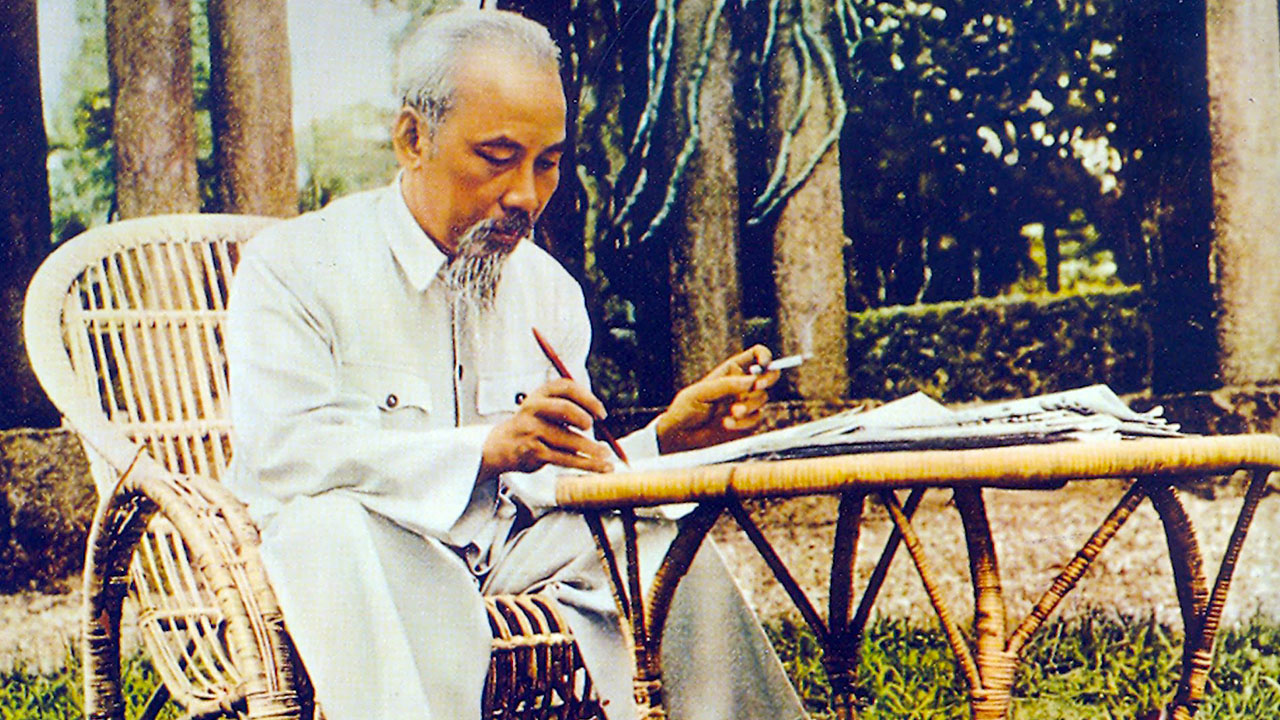
Ho Chi Minh, born as Nguyen Sinh Cung, adopted many names during his revolutionary life, but he is best known as Ho Chi Minh (“Ho, the Enlightened One”). He emerged as a national hero who fought for Vietnam’s independence and unity.
Early Life
Ho Chi Minh was born in 1890 in Nghe An province, Vietnam. He came from a family of scholars and developed an interest in freeing Vietnam from French colonial rule from a young age after his father lost his job for criticizing the French regime.
As a young man in 1911, Ho Chi Minh signed on a French steamer as a cook’s assistant to begin his travels around the world. He lived in many countries, learning about western colonization and concepts of freedom. These experiences shaped his future efforts toward liberating Vietnam.
Revolutionary Activities
In the 1920s-1940s, Ho Chi Minh embraced communism. He helped form the Indochinese Communist Party to resist French colonial rule. During this time, he also helped establish the Viet Minh, a nationalist independence coalition fighting for Vietnam’s freedom.
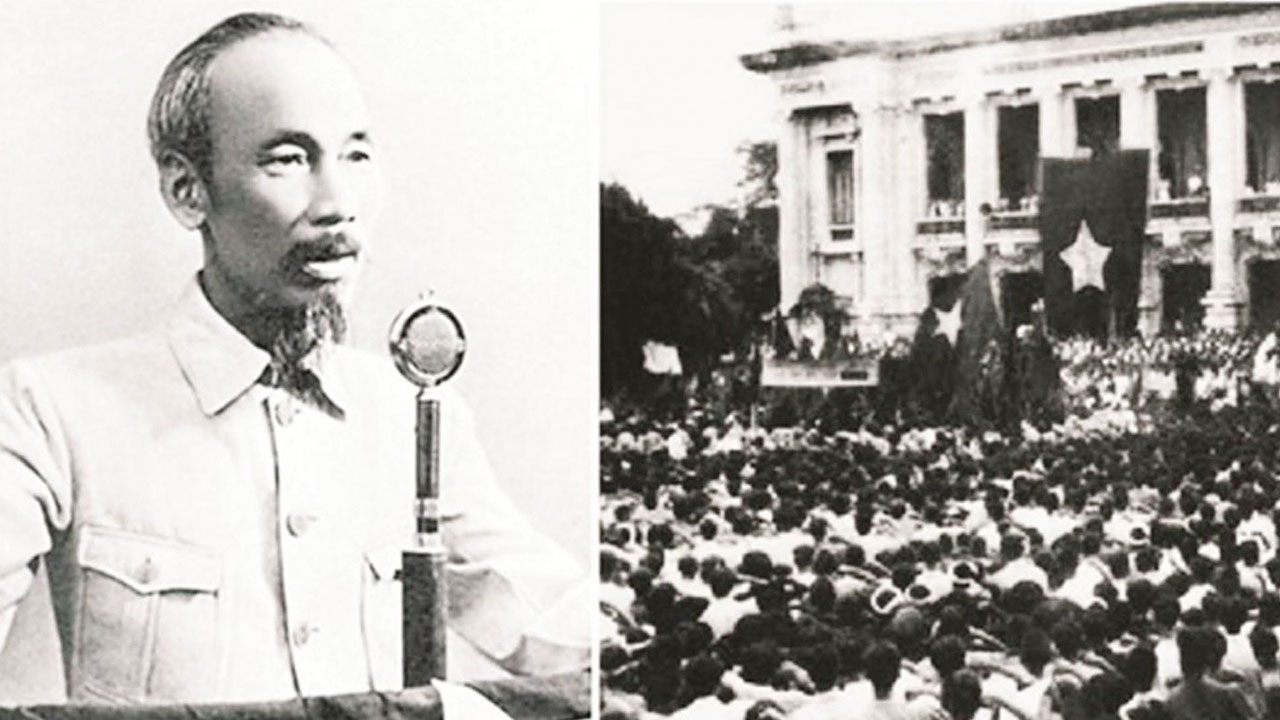
After many years abroad, Ho Chi Minh returned in 1941 to Vietnam during World War II. Capitalizing on the turmoil, he formed the Viet Minh government in pacified areas of northern Vietnam in 1945-1946 when the Japanese withdrew. He read Vietnam’s Declaration of Independence based on America’s, hoping to gain Allied support, but the British-supported French returned to reclaim their former colony.
This launched the First Indochina War from 1946-1954 between France and the Viet Minh forces led by Ho Chi Minh. After their decisive victory at Dien Bien Phu, the Geneva Accords split Vietnam temporarily in half at the 17th parallel. Ho Chi Minh and communists took control of North Vietnam, while Ngo Dinh Diem led the new state of South Vietnam.
President of North Vietnam
As president of North Vietnam from 1945 until his death in 1969, Ho Chi Minh implemented a Soviet-style centrally planned economy. He was widely admired by the Vietnamese people and his modest, simple lifestyle furthered his reputation.
During the Vietnam War (1955-1975), Ho Chi Minh developed strategies alongside General Vo Nguyen Giap to unite Vietnam under communism. He provided moral support until his death in 1969, inspiring fighters in the North and communist Viet Cong in South Vietnam.
Historical background of Ho Chi Minh Mausoleum
The foundations of the Ho Chi Minh Mausoleum lie deeply embedded in Vietnam’s complex history. Following Ho Chi Minh’s death on September 2, 1969, the decision to construct a mausoleum was made under the auspices of the Vietnamese government, a choice starkly contrasted with Ho’s own desires for cremation and the distribution of his ashes across the country. This decision was not simply about honoring Ho; it was a political act aimed at solidifying his role as a national icon during a time when Vietnam was still grappling with the scars of colonialism and war.
Key dates surrounding the mausoleum’s history:
- September 2, 1973: Construction begins.
- August 29, 1975: Official inauguration.
- September 2, 1969: Death of Ho Chi Minh.
These dates evoke a sense of urgency and dedication, marking significant moments in Vietnam’s journey toward independence and unity. The mausoleum, erected in the symbolic Ba Dinh Square, is a pivotal locale for national celebrations and ceremonies, reinforcing its importance as a site of remembrance and national pride.
Moreover, the construction of the mausoleum involved meticulous planning to ensure its reflection of Vietnamese cultural integrity while being influenced by other global trends. The layout and design elements drew heavily from Lenin’s Mausoleum in Moscow but integrated traditional Vietnamese architectural styles. This blend of elements emphasizes a global acknowledgment while ensuring the mausoleum speaks to Vietnam’s unique culture a powerful analogy for the nation itself, navigating traditions and modernity.

Architectural design and features of Ho Chi Minh Mausoleum
The architectural design of the Ho Chi Minh Mausoleum stands as a profound reflection of both national identity and resilience. Rising to a height of approximately 21.6 meters (70 ft) and encompassing a width of 41.2 meters (135 ft), the mausoleum is a bulky rectangular structure that commands attention with its imposing presence. Its gray granite exterior symbolizes strength, reminiscent of the rugged landscape of Vietnam, while the interior evokes a solemn atmosphere with polished black and red stones, inciting reflection and reverence among visitors.
The design elements distinctly reflect Vietnamese architecture, with features like a slanted roof and intricate jade stone murals that narrate stories of the nation’s history. This relationship between form and function illustrates a harmonious coexistence of cultural heritage and political significance. The mausoleum isn’t just a resting place; it’s a candor that conveys narratives of Vietnam’s struggle and resilience.
Key Features of the Mausoleum:
- Height: 21.6 meters (70 ft)
- Width: 41.2 meters (135 ft)
- Materials: Constructed using granite sourced from different regions of Vietnam.
- Interior: Featuring black and red polished stones and jade inscriptions.
- Design Inspiration: Influenced by Lenin’s mausoleum yet retaining strong Vietnamese attributes.
This architectural masterpiece is also designed to withstand natural calamities. Withstanding floods and earthquakes showcases the meticulous thought put into the structure’s integrity. This is symbolic of Ho Chi Minh’s vision for a robust and resilient Vietnam a poignant metaphor illustrating how a structure embodies the hopes, dreams, and sacrifices of an entire nation.
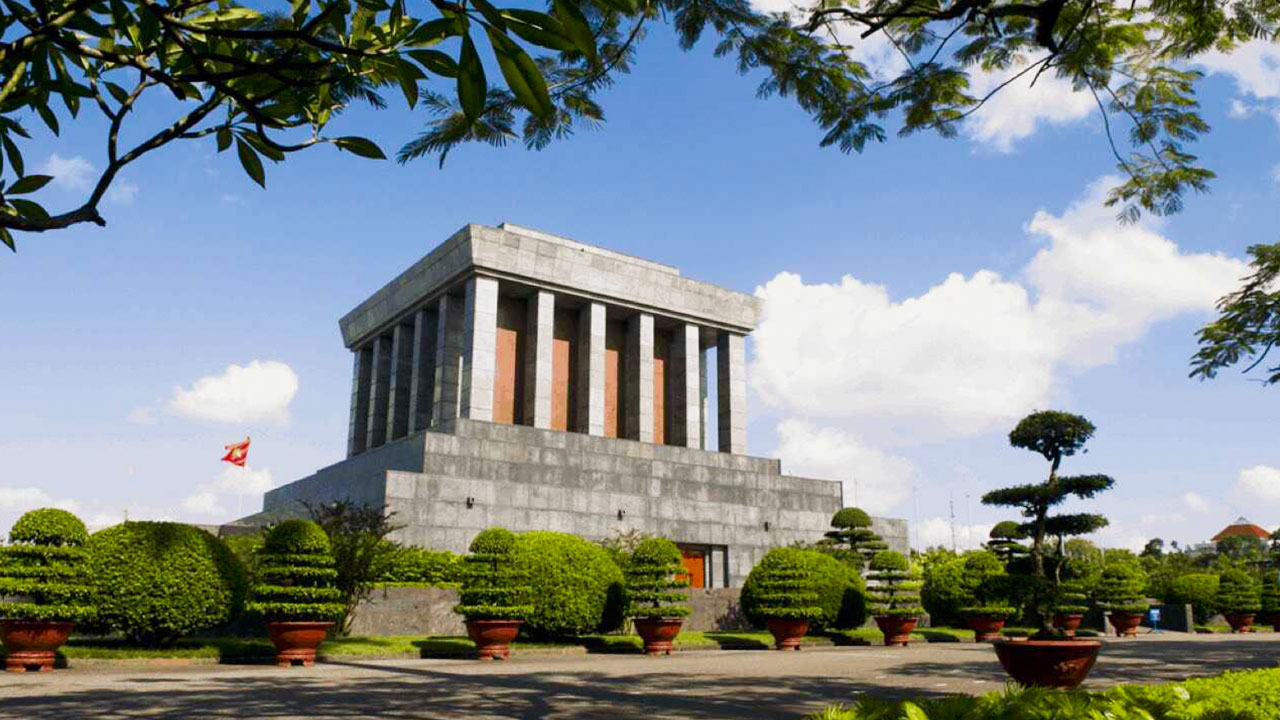
Visiting hours and entry regulations for Ho Chi Minh Mausoleum
Visiting the Ho Chi Minh Mausoleum is an experience steeped in etiquette and respect, reflective of its significance to the Vietnamese people. The mausoleum operates under specific visiting hours that vary by season, balancing accessibility with the reverence of the site.
Visiting Hours:
- Address: 1 Hung Vuong, Dien Bien, Ba Dinh, Hanoi
- April to September:
- Tuesday to Thursday: 7:30 AM – 10:30 AM
- Saturday and Sunday: 7:30 AM – 11:00 AM
- December to March:
- Tuesday to Thursday: 8:00 AM – 11:00 AM
- Saturday and Sunday: 8:00 AM – 11:30 AM
- Closed on Mondays and Fridays, and for two months each fall when Ho Chi Minh’s body is sent to Russia for maintenance.
Entry to the mausoleum is free, but visitors are required to adhere to strict conduct regulations to maintain a respectful atmosphere in alignment with Ho Chi Minh’s legacy.
Entry Regulations:
- Attire: Long pants and covered shoulders are mandatory.
- Prohibited Items: Photography and the carrying of bags or cameras inside the mausoleum are forbidden.
- Conduct: Visitors are expected to maintain silence and dignity within the premises.
These regulations foster an atmosphere of solemnity and respect, ensuring that visitors reflect on the profoundness of the historical figures interred within. Each element, from the hours of operation to the decorum required from visitors, constructs an experience rife with historical reverence, inviting contemplation amidst the busy life of Hanoi.
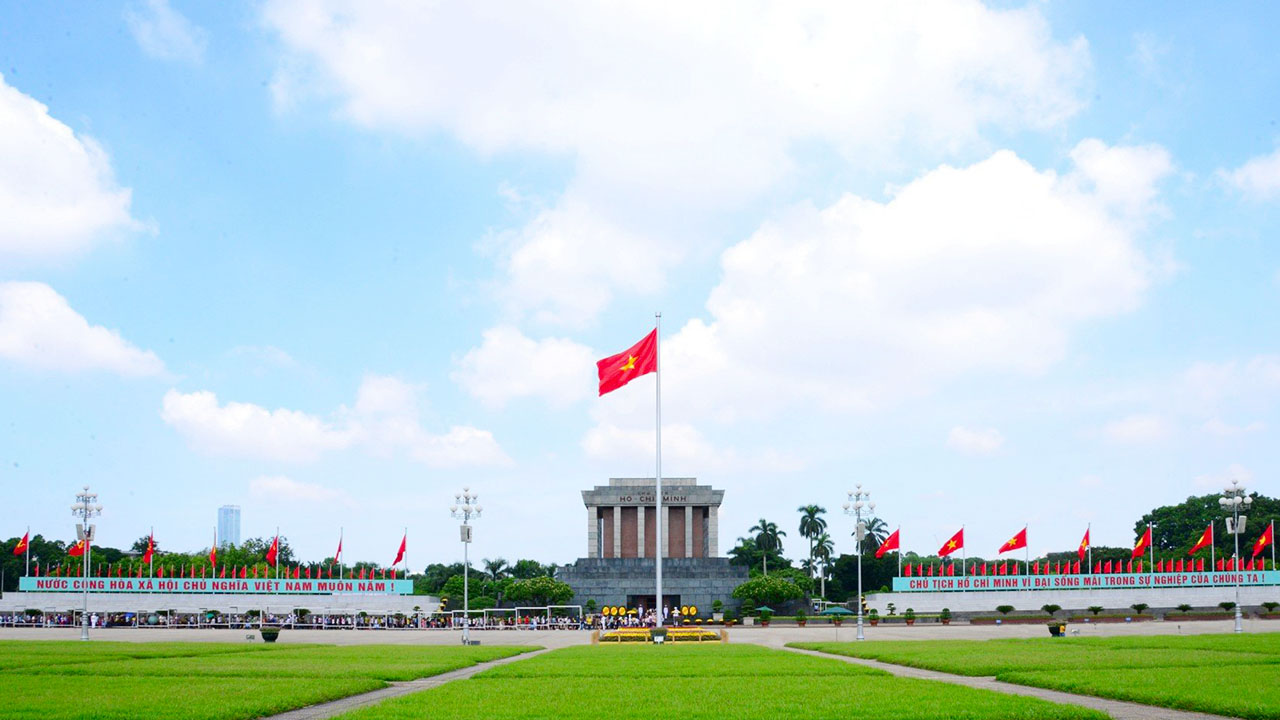
Significance of Ho Chi Minh Mausoleum in Vietnamese culture
The Ho Chi Minh Mausoleum is much more than just a resting place; it holds pivotal cultural significance steeped deeply in the soul of the Vietnamese people. It stands as a symbol of pride and a unifying force amid the rich tapestry of Vietnam’s complex history. It serves as a reminder of the sacrifices made for independence and the enduring values embodied by Uncle Ho.
The mausoleum continues to serve a communal purpose acting as a central location for national ceremonies, military parades, and moments of reflection on Vietnam’s storied past. It also crystallizes Ho Chi Minh’s vision one where unity and independence are paramount encouraging future generations to remember and uphold these ideals fiercely.
Cultural Significance:
- Symbol of Unification: The mausoleum acts as a central point for national unity, reflecting the shared history of the Vietnamese people.
- National Ceremonies: Regular gatherings and commemorations at the site reinforce cultural pride, inviting citizens to connect with their shared heritage.
- Historical Reflection: Visitors are reminded of the resilience of their forebears in their quest for independence.
The mausoleum also attracts thousands of visitors daily from foreign tourists to local citizens signifying Ho Chi Minh’s indelible impact on Vietnamese identity and culture. It has transformed into a site not just of mourning, but of celebration, education, and reflection on what it means to be Vietnamese in a historically rich narrative.
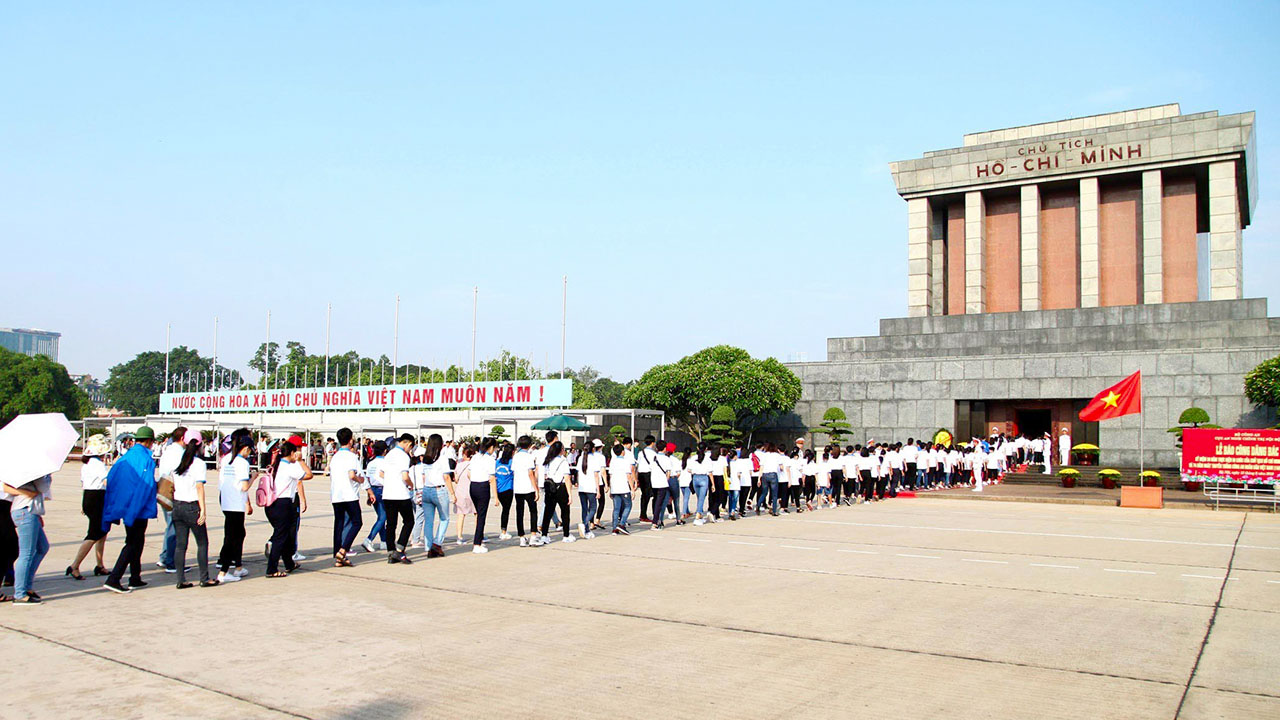
Visitor tips for exploring Ho Chi Minh Mausoleum
Exploring Ho Chi Minh Mausoleum can be a rewarding yet solemn experience. To facilitate a meaningful visit, here are some essential tips to keep in mind to ensure respect for the site and an enriching experience.
Essential Tips:
- Arrive Early: The mausoleum can become quite busy, especially on weekends and holidays; arriving early can help avoid long lines.
- Conduct Research: Familiarize yourself with Ho Chi Minh’s life and legacy before visiting, enhancing your appreciation for the site.
- Dress Appropriately: Respect the dress code; wearing appropriate attire helps maintain the atmosphere of the mausoleum.
- Time Management: Allocate sufficient time not only for the mausoleum visit but also to explore surrounding attractions.
- Stay Silent: Maintain a respectful demeanor when inside the mausoleum; hushed conversations are encouraged to reflect the atmosphere.
These tips will not only enhance the visitor experience but also allow for an understanding of the deeper significance behind Ho Chi Minh’s legacy. Embracing the cultural and historical context surrounding the mausoleum can lead to a more reflective and respectful visit.
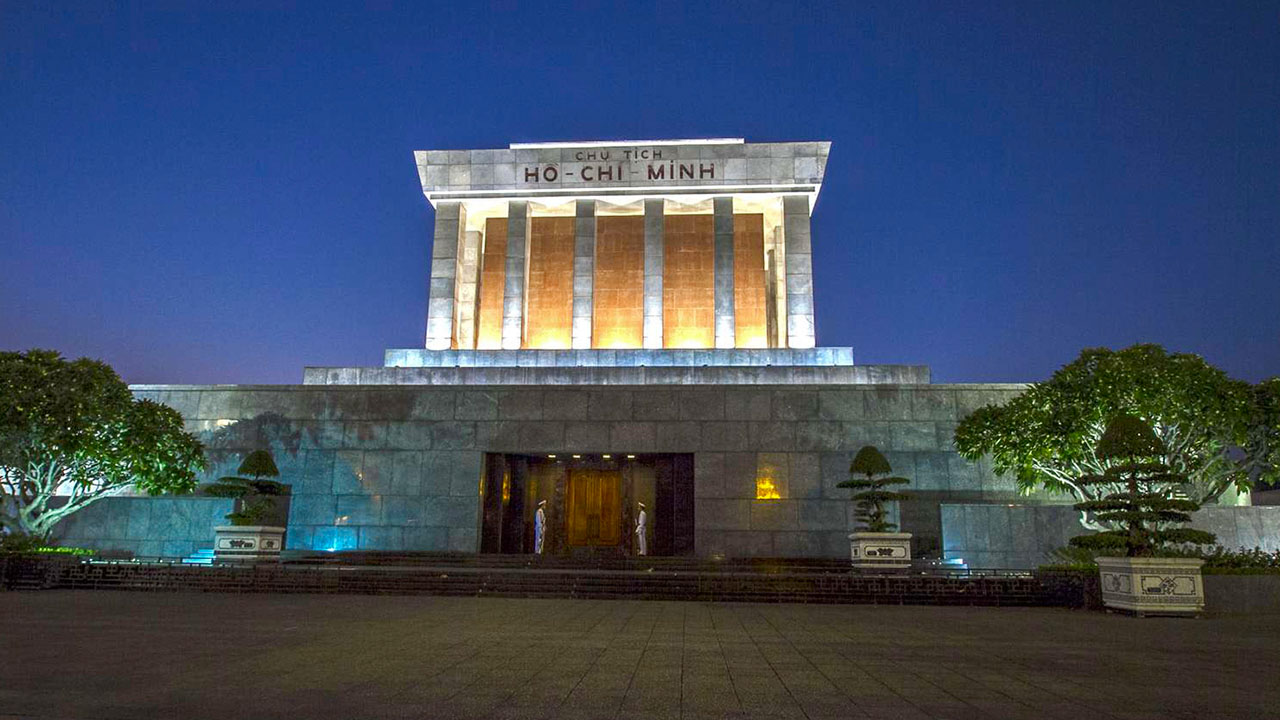
Commemoration activities at Ho Chi Minh Mausoleum
The Ho Chi Minh Mausoleum is also a site of vibrant commemoration activities, reflecting the ongoing reverence for Ho Chi Minh’s legacy. Various events throughout the year honor the contributions of Vietnam’s founding father, reinforcing the connection between the past and the present.
Key Commemoration Activities:
- Memorial Ceremonies: Regular gatherings commemorate significant anniversaries, including Ho Chi Minh’s birthday on May 19 and Vietnam’s National Day on September 2.
- Floral Tributes: National organizations and individuals lay wreaths in tribute to Ho Chi Minh, demonstrating collective respect and mourning.
These widespread activities not only offer an opportunity for communal reflection but also encourage local citizens and tourists alike to engage with Vietnamese history actively. The commitment to honoring Ho Chi Minh speaks volumes about the enduring identity shaped by his vision for independence.
As these commemorative events draw thousands of visitors, they also echo sentiments of gratitude for the sacrifices made in the quest for sovereignty. Such observances serve to bolster national pride and reflect the country’s journey towards unification and resilience a fitting tribute to a leader who dedicated his life to these ideals.
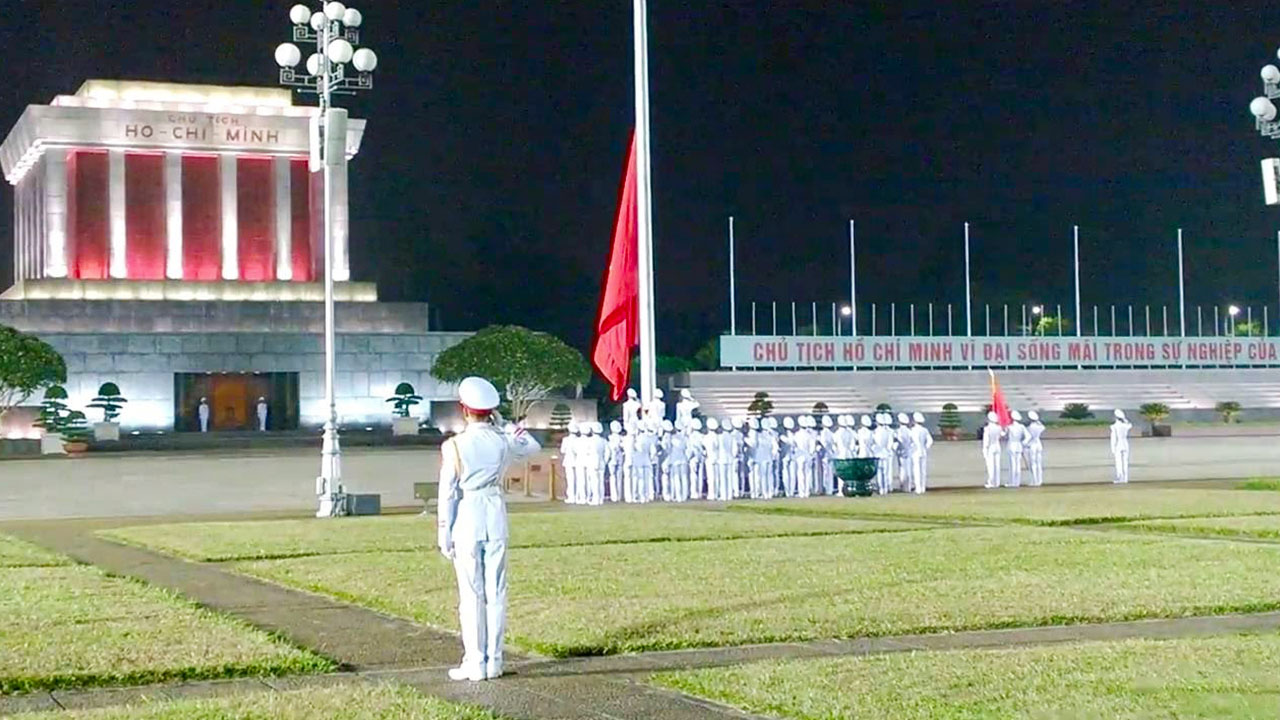
Comparison of Ho Chi Minh Mausoleum with other modern mausoleums
In a global context, comparing the Ho Chi Minh Mausoleum with other modern mausoleums illuminates distinct cultural values and architectural philosophies. While each monument serves to honor a significant figure in history, they differ markedly in design, purpose, and aesthetics.
Comparative Analysis:
| Feature | Ho Chi Minh Mausoleum | Taj Mahal | John F. Kennedy Presidential Library |
|---|---|---|---|
| Style | Simple and robust, embodying unity and resilience | Intricately designed with artistic grandeur | Blend of modern architecture with historical significance |
| Purpose | To memorialize a national leader and reinforce a political ideology | Represents a testament of love | A space honoring a president, mixing legacy with modern values |
| Cultural Emphasis | Emphasizes national resilience and unity | Focuses on romantic love and beauty | Combines historical context with contemporary relevance |
Through this lens, the mausoleum’s design speaks volumes about Vietnam’s cultural landscape denoting simplicity and a collective spirit rather than individual grandeur. While monuments like the Taj Mahal prioritize aesthetic extravagance, the Ho Chi Minh Mausoleum encapsulates the ideals Ho Chi Minh promoted throughout his life.
The simplicity of its design and its robust materials reflect a nation in pursuit of resilience and unity, showcasing how cultural values profoundly shape the architecture of memory. Each structure serves its own narrative purpose, revealing the diverse tapestry of how societies commemorate their leaders.

Educational value of Ho Chi Minh Mausoleum for tourists
The educational potential of the Ho Chi Minh Mausoleum extends beyond its physical structure; it serves as a pivotal gateway to understanding Vietnam’s profound history and cultural identity. As visitors explore the mausoleum, they encounter rich narratives that illuminate Ho Chi Minh’s significant contributions to the nation.
Educational Opportunities:
- Interpretive Materials: Visitors often find brochures, audio guides, and plaques that elaborate on Ho Chi Minh’s life and revolutionary ideology, providing context for his legacy.
- Symbolic Significance: The mausoleum itself offers lessons in resilience, unity, and the struggles of the Vietnamese people, laying bare the intertwined relationship between history and memory.
- Guided Tours: Special tours focusing on the history of Ho Chi Minh and the mausoleum enhance understanding and appreciation for the broader socio-political context.
Through these educational initiatives, the mausoleum serves not just as a monument but as an institution of learning, where the richness of Vietnam’s history is presented in an engaging manner. From the intricacies of Ho Chi Minh’s leadership to the struggles faced by the nation, each visit fosters a sense of connection and shared understanding.
The site acts as a space for reflection, encouraging visitors to consider the broader implications of Vietnam’s journey and the leadership of Ho Chi Minh. It invites a complex engagement with themes of warfare, peace, and national identity, making it a crucial educational resource for both domestic and international audiences.
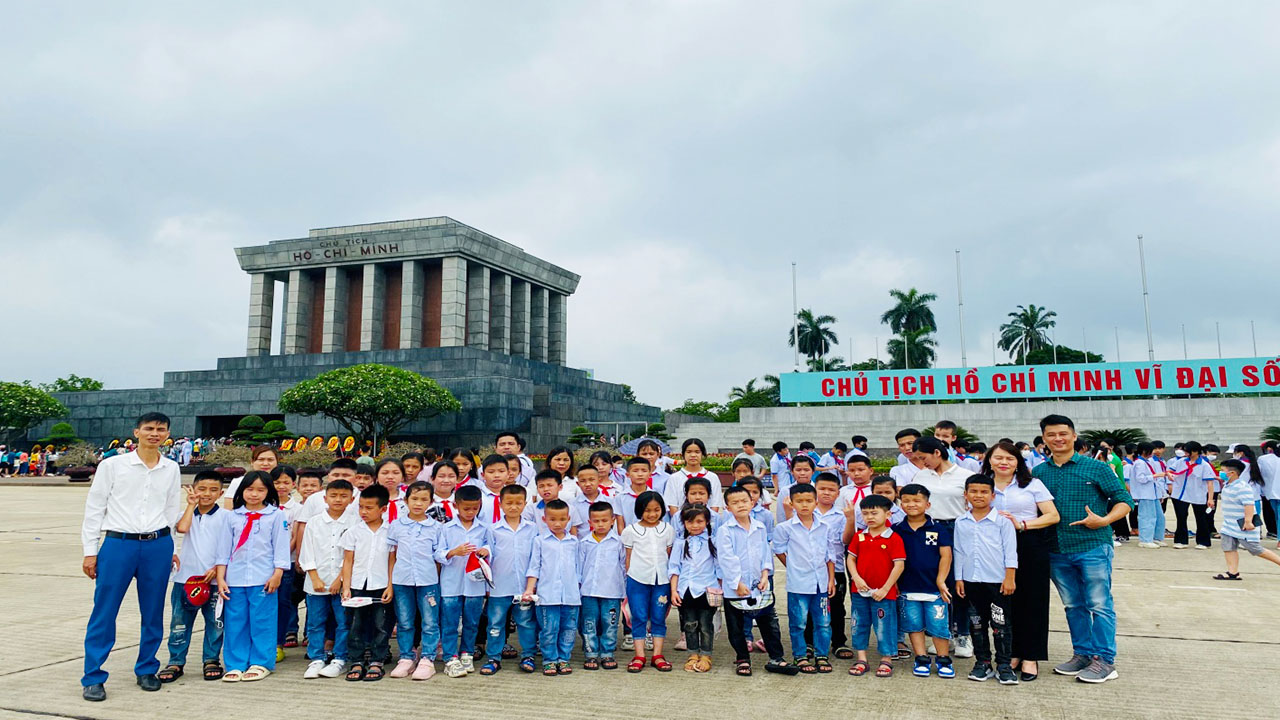
Maintenance and preservation of Ho Chi Minh’s body inside the mausoleum
The preservation of Ho Chi Minh’s body within the mausoleum is a meticulous process evident of the Vietnamese government’s commitment to honoring their leader’s legacy. Since his passing, a dedicated team of preservationists employs advanced techniques to ensure his remains are maintained for posterity.
Preservation Process:
- Advanced Embalming Procedures: Following his death in 1969, experts conducted procedures to replace bodily fluids with protective chemicals designed to minimize decay.
- Regular Maintenance: Annually, Ho Chi Minh’s body undergoes thorough upkeep, including the reapplication of embalming fluids and meticulous environmental controls surrounding temperature and humidity.
- Expert Team: A specialized team of professionals is constantly on hand to monitor conditions and carry out necessary maintenance tasks to ensure the body’s preservation remains optimal.
This rigorous maintenance routine reflects a broader cultural reverence for Ho Chi Minh today, mirroring the respect and honor his legacy commands. The laborious nature of the process symbolizes the dedication of the Vietnamese people to keeping their history and their leader visible for future generations to learn from and appreciate.
Such efforts raise important questions about memory and commemoration, underscoring a societal commitment to historical remembrance that transcends individual desires and reflects collective values. Ho Chi Minh’s mausoleum thus serves as both a resting place and an enduring lesson in national identity.

Frequently Asked Questions (FAQs)
- What are the visiting hours for Ho Chi Minh Mausoleum?
- The mausoleum is open from 7:30 AM to 10:30 AM Tuesday to Thursday and 7:30 AM to 11:00 AM on weekends from April to September.
- Is there an entry fee for the mausoleum?
- No, entry to the mausoleum is free of charge.
- What type of attire is required to visit the mausoleum?
- Visitors must wear long pants and shirts that cover their shoulders as a sign of respect.
- Are photographs allowed inside the mausoleum?
- No, photography is strictly prohibited inside the mausoleum to maintain a respectful atmosphere.
- What should I do if I wish to attend a commemoration event?
- Check the mausoleum’s official schedule for upcoming commemorative events, which are often held on significant national holidays.
Key Takeaways
- The Ho Chi Minh Mausoleum serves as a vital symbol of Vietnamese heritage and pride.
- It is a site of national significance and educational value, attracting thousands of visitors each year.
- Proper etiquette and respect are crucial when visiting the mausoleum.
- The construction and design reflect a blend of cultural influences and modern resilience.
- Preservation of Ho Chi Minh’s body involves advanced techniques and dedicated expertise.
Attractions Near The President Ho Chi Minh Mausoleum Complex
The Ho Chi Minh Mausoleum complex contains other attractions besides the mausoleum itself that offer more insight into Ho Chi Minh. Nearby historical sites about Ho Chi Minh’s life include One Pillar Pagoda, the Presidential Palace, Ho Chi Minh Museum, House No. 54, and Ho Chi Minh’s House on stilts.
One Pillar Pagoda
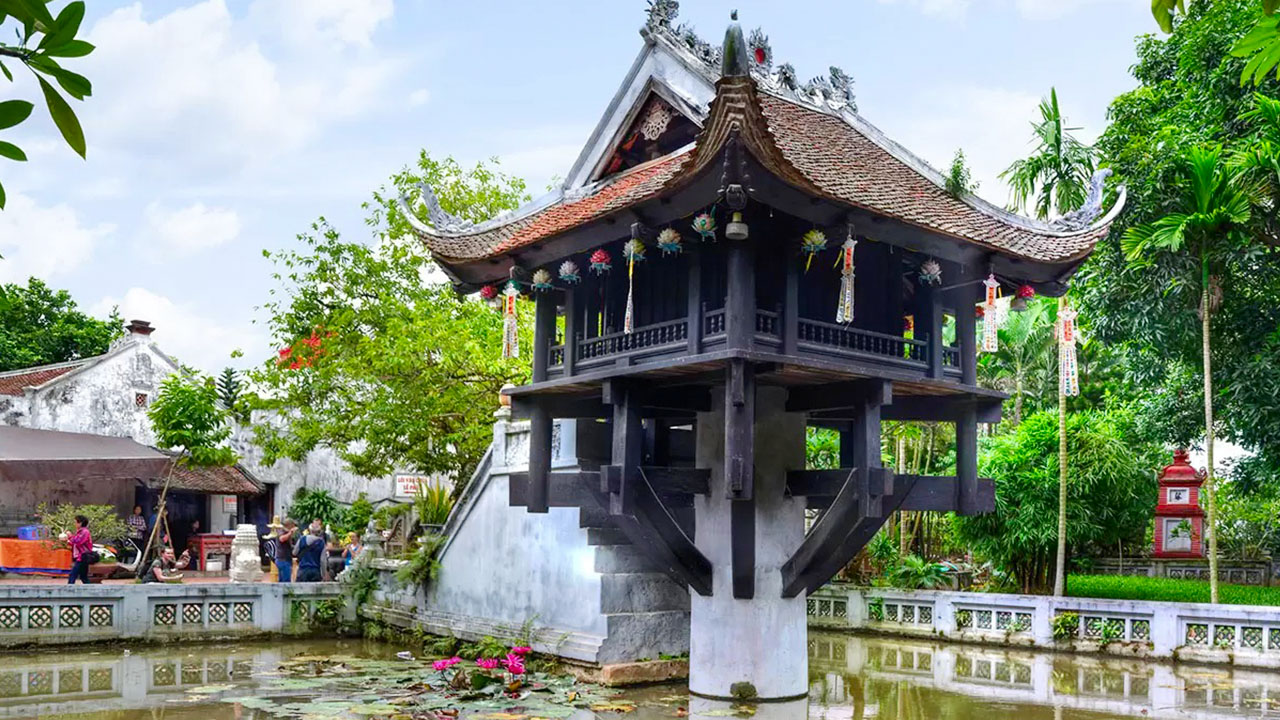
One Pillar Pagoda sits on a single stone pillar emerging from a lotus flower pond. King Ly Thai Tong built it in 1049 after dreaming goddess Quan Am sat on a similar lotus petal and handed him a male child.
When Ho Chi Minh died, the National Assembly held funeral meetings in One Pillar Pagoda while construction finished on his mausoleum. Afterwards, it became part of the greater mausoleum complex.
Visitors can admire the architectural uniqueness of its precarious balance. Historically it represents the continuity between Vietnam’s imperial past and communist present embodied in Ho Chi Minh’s legacy.
Presidential Palace

The former French Governor’s Palace became the residence of Ho Chi Minh. He declined living in the luxurious building because of its incongruence with his modest tastes. After renaming it “Presidential Palace” in 1954, he only used its gardens to entertain foreign visitors and hold government meetings.
Restored to its early 20th century French grandeur, its beaux-arts façade and colonial architecture now houses the Ho Chi Minh Museum. Visitors get more intimate insight into Ho Chi Minh’s habits, hobbies, personal artifacts etc. at this multimedia museum.
House No. 54

In 1958, Ho Chi Minh moved across the street to House Number 54, made of teak with an earthen floor. It had simple amenities like a dictionary table, a rattan bed, and a fan. This served as his home until his death in 1969, with its austere furnishings reflecting Ho Chi Minh’s spartan lifestyle.
Preserved as a national relic, House Number 54 stands directly across from the mausoleum entrance. Visitors must remove their shoes before entering to view his spartan bedroom, workroom and lounge space kept exactly as Ho Chi Minh left it.
Ho Chi Minh’s House on Stilts
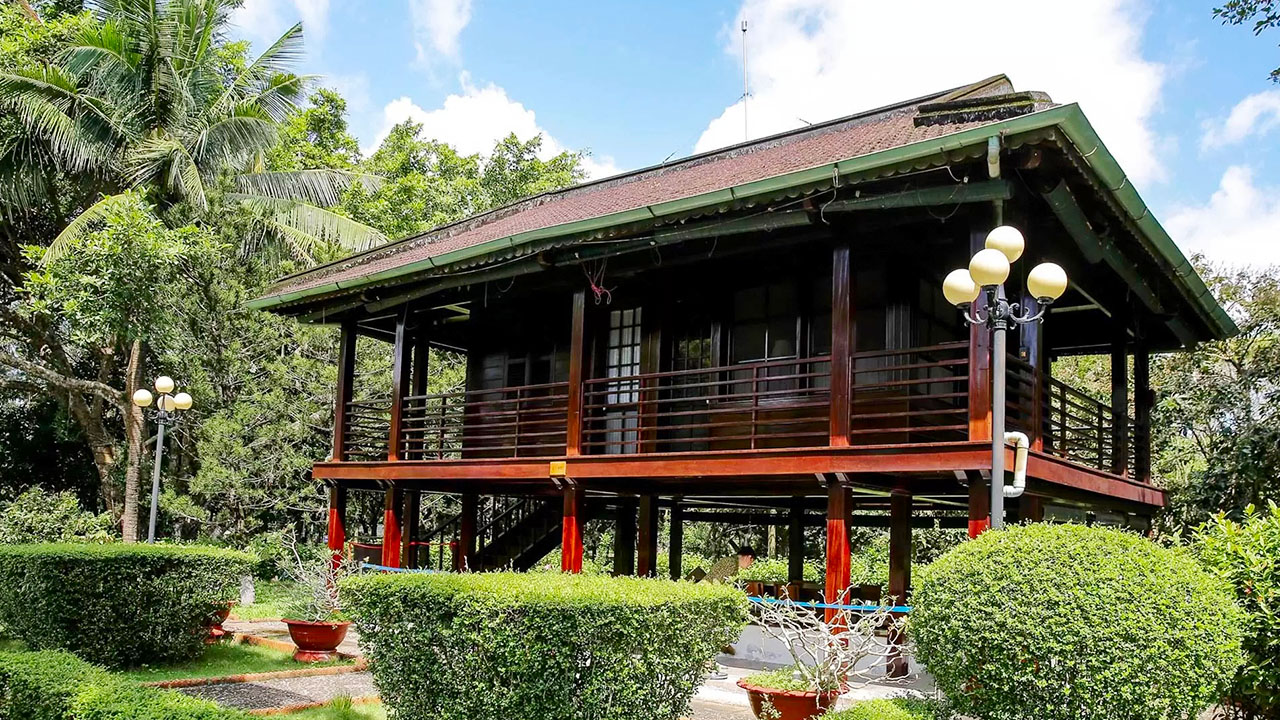
Near his residence at House Number 54 is a reconstructed traditional Vietnamese house on stilts made of wood surrounded by water coconut trees.
This recreated dwelling illustrates the humble childhood home of Ho Chi Minh in his native village. It has displays inside showcasing different periods of Ho Chi Minh’s life plus his personal effects like uniforms, pens, cups, ash trays, etc.
Seeing where Uncle Ho lived and worked humanizes his epic revolutionary story. People sense how this ascetic leader derived inspiration from simple living to motivate his entire nation.
Conclusion
The Ho Chi Minh Mausoleum stands as an imposing yet peaceful sanctuary honoring Vietnam’s late leader. Within its granite walls, visitors reconnect with the ongoing presence of Ho Chi Minh. People from Vietnam and worldwide come to show respects, continuing bonds between the past and present.
Laying wreaths, flowers and incense at his immortal tomb lets admirers appreciate Ho Chi Minh’s role guiding Vietnam’s destiny. Through commemorating this founding father enshrined in resilient tranquility, Vietnamese citizens strengthen their shared purpose and identity. The revival and renewal of their nation’s fortunes owe much to this humble revolutionary visionary now resting eternally at his eponymous mausoleum.


